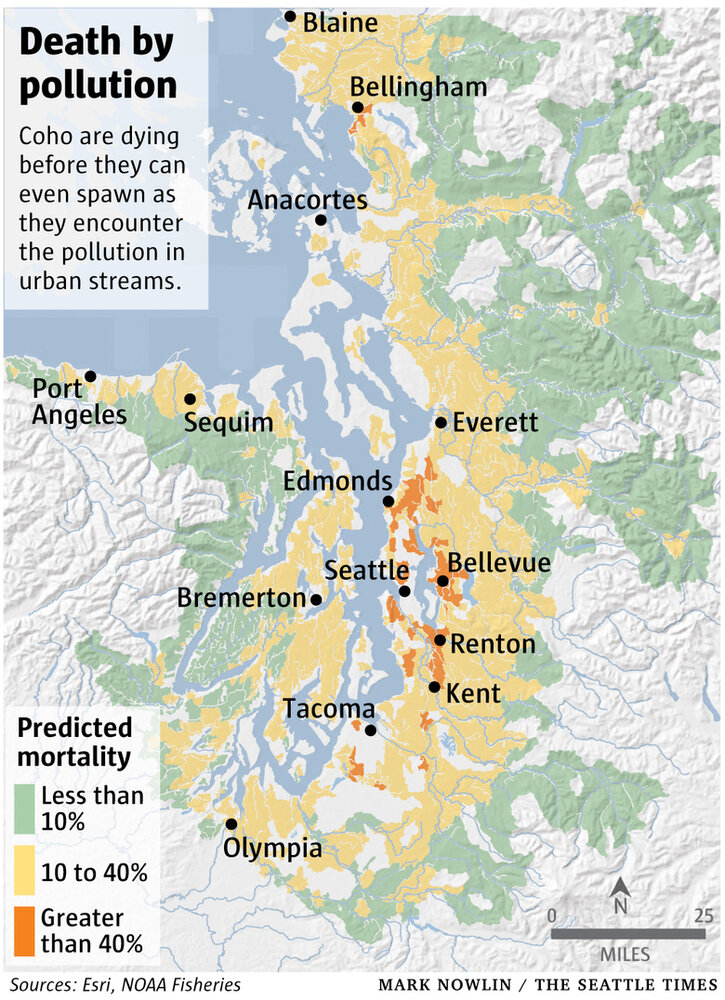From The Washington Post:
A recent study traced a major coho salmon die-off to contaminants from roads and automobiles — brake dust, oil, fuel, chemical fluids — that hitch a ride on storm water and flow into watersheds. The contaminants are so deadly, they kill the salmon within 24 hours.
“Our findings are . . . that contaminants in stormwater runoff from the regional transportation grid likely caused these mortality events. Further, it will be difficult, if not impossible, to reverse historical coho declines without addressing the toxic pollution dimension of freshwater habitats,” said the study, published Wednesday in the journal Ecological Applications.
This is more evidence that car culture itself is destroying the planet. Electric and hybrid cars do not substanitively address these issues. Car culture must end if Coho Salmon are going to survive. To be clear: CARS ARE NOT SUSTAINABLE. Period. We work for a future where there are no automobiles-electric or otherwise-operating within the Salish Sea watershed. Some call this “unrealistic,” but if you truly want to save salmon it is the only realistic position to take.

From the paper:
Adult coho salmon are exceptionally sensitive to the harmful effects of toxic urban runoff. Field surveys spanning more than a decade have shown very high rates of mortality in urban streams from the central Puget Sound Basin (Scholz et al. 2011). Affected adult males and gravid females become disoriented and show surface swimming, gaping, a loss of equilibrium, and finally death on a timescale of a few hours. Extensive forensic research has ruled out stream temperature, dissolved oxygen, spawner condition, tissue pathology, pathogens or disease, and other factors commonly associated with fish kills in freshwater habitats (Scholz et al. 2011), which suggests that toxicants found in stormwater run- off are the most likely culprit. Consistent with this, direct exposures to untreated urban stormwater reproduce the mortality syndrome in adult coho, and this toxicity is prevented by pre-treatment with bioinfiltration to remove chemical contaminants (Spromberg et al. 2016). Loss rates to die-offs are typically high, e.g., 60–90% of an entire fall run within a given urban stream. Initial modeling has shown that wild Puget Sound coho, pre- sently a species of concern under the U.S. Endangered Species Act, cannot maintain population abundances at such high mortality rates (Spromberg and Scholz 2011)…
hundreds or even thousands of distinct chemical contaminants in urban stormwater runoff have never been toxicologically characterized.
Read the study: https://www.documentcloud.org/documents/4111834-Feist-Et-Al-Pre-Print-2017.html